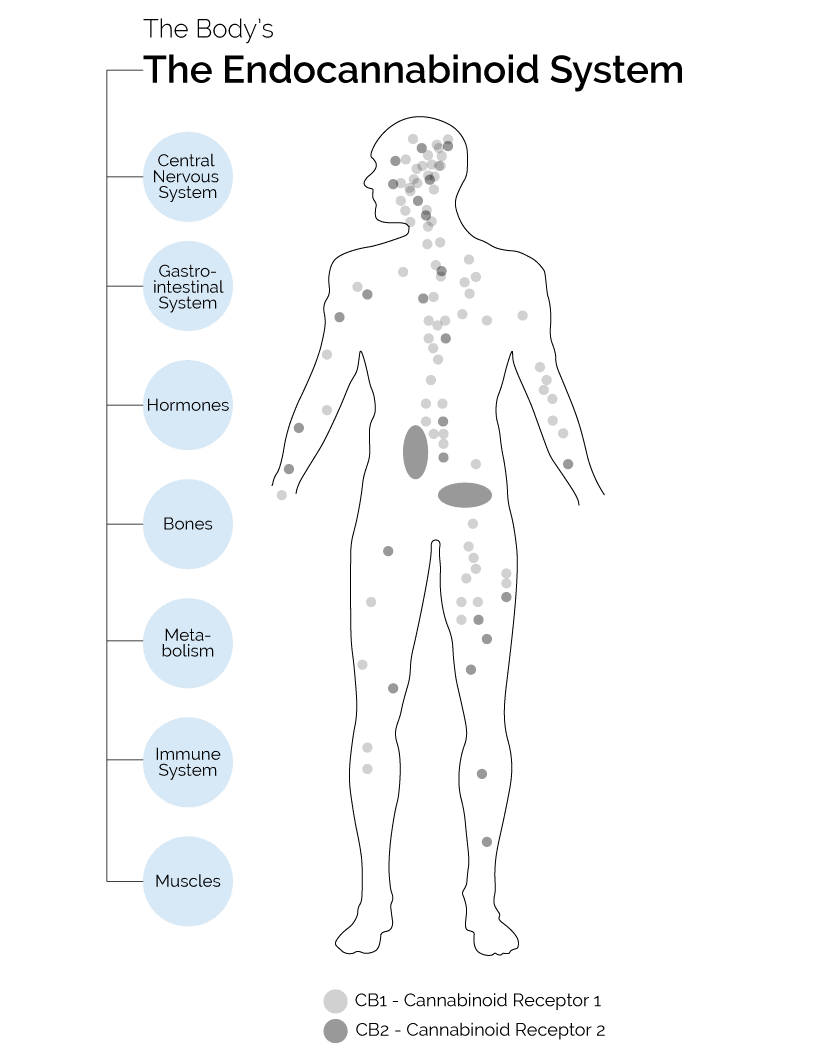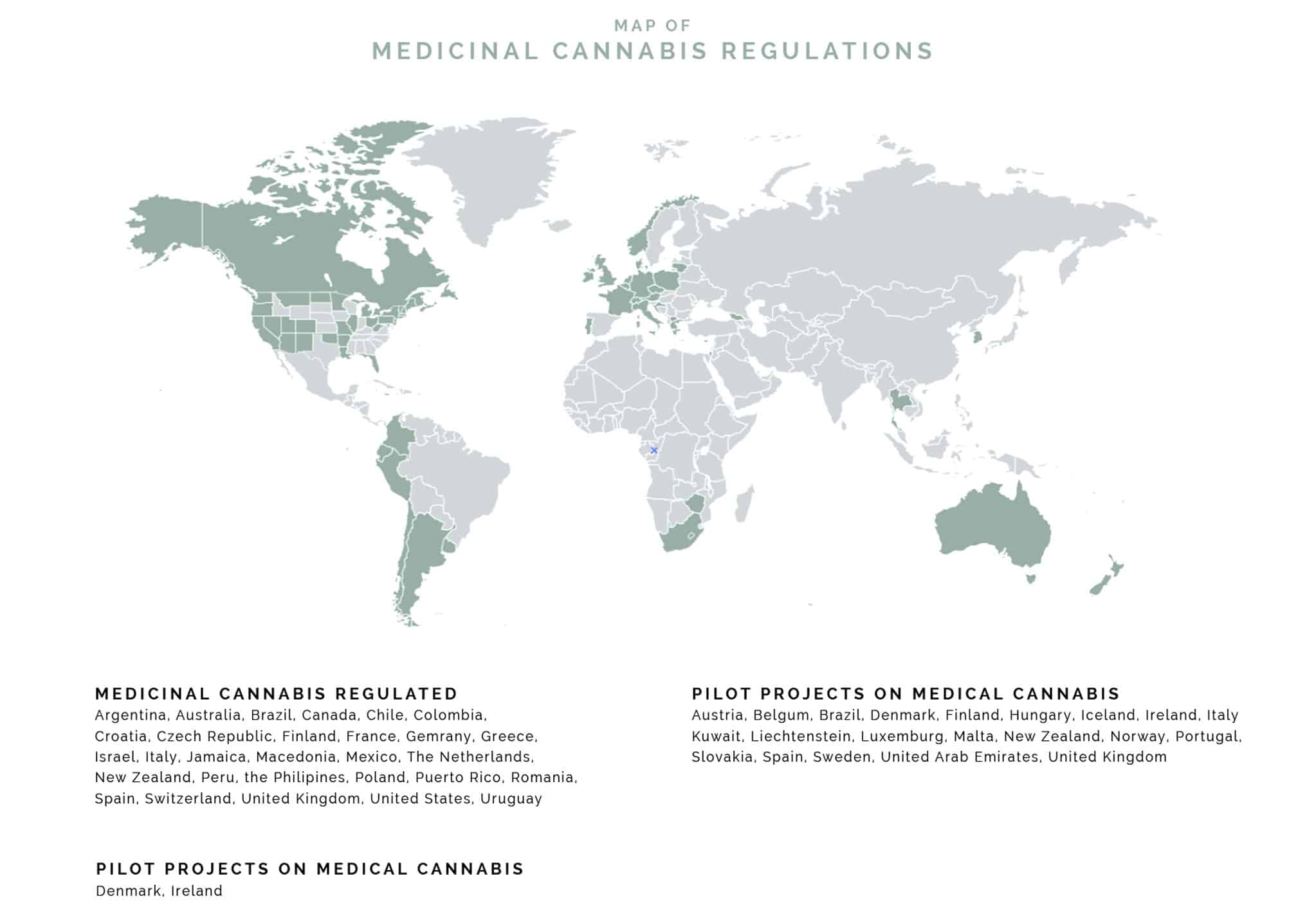History of Cannabis
in Medication
Early History
6000+ Years of Use
The use of Cannabis for medical purposes has been actively documented for more than 6000 years.1
In fact, the earliest evidence of cannabis cultivation dates back to 4000 B.C in China, where cannabis was an important part of the diet. It was even considered as one of “the 5 grains” together with rice, barley, millet, and soy beans.2
During the Han Dynasty in China (206 B.C. – 220 A.D.) the world’s oldest pharmacopeia, Pen-ts’ao ching, was written based on oral traditions passed down to generations since 2.700 B.C. The pharmacopeia indicates that cannabis is useful for a range of diseases, here among, rheumatic pain, intestinal constipation, disorders of the female reproductive system or even malaria. On top of that, it has been used to anesthetize patients during surgery.3
Cultivation & Use of Cannabis
In India, cannabis properties were utilised even further, both for medicine and recreational purposes.
It held such an important meaning that it was religiously associated. It belonged to one of five sacred plants referred to as: “the source of happiness”, “the donator of joy” and “bringer of freedom”.3
AT 1000 years B.C. the distinction and knowledge of both the psychoactive and medical effects were immense. Cannabis was widely used in the treatment of numerous diseases. The categories of treatment were many here among: analgesic (headache), anticonvulsant (epilepsy, rabies), hypnotic, tranquilizer (anxiety), anesthetic, anti-inflammatory (rheumatism), antibiotic (infections), antiparasitic (worms), antispasmodic (diarrhea), digestive- and appetite stimulant as well as being used as an aphrodisiac and expectorant (asthma).3
The knowledge and use of the sacred herb spread to Arabia as found in Muslim texts (the year 1000 A.D). Presumably, it was the Arab traders who brought cannabis to the African continent. Cannabis reached Brazil in the 16th hundred when African slaves brought the plant to the area. Meanwhile, in southern Europe, cannabis was a scarce resource solely used for cultivating fibers taught by the Arabs, and knowledge about cannabis’ medical benefits was close to non-existing as it was confused with opium. Therefore, the long-documented history of cannabis’ medical benefits did not reach western Europe before the 19th century.3
Modern History
Cannabis as an Over-The-Counter Medication
The therapeutic use of cannabis was introduced to western medicine in 1839 by the Irish physician William O’Shaughnessy, the author of “On the preparations of Indian hemp or gunjah’’. His writings were based on his work experience in India, where he worked for the British East India Company. To gather the necessary knowledge, he reviewed existing literature about cannabis as well as conferred with elders and healers to understand the recreational and medical use of cannabis.
However, it was not before O’Shayghnessy’s own successful attempt in proving cannabis’s safety and its analgesic and sedative properties that the plant rapidly earned a central role in western medicine throughout Europe and North America.
The rapid adoption of cannabis’ benefits, resulted in the establishment of Committee on Cannabis Indica, of the Ohio State Medical Society, which in 1860 reported cannabis to be a base of successful treatment against gonorrhea, asthma, rheumatism, and intense stomach pain.
The increasing popularity led to the Cannabis status of an over-the-counter pharmaceutical known as “Piso’s cure” or “one-day cough cure”.
In 1924, with more than half a century’s use of cannabis, the Sajous’s Analytic Cyclopedia of Practical Medicine concluded that the plant was useful in the treatment of migraines, coughing and inflammation along with diseases such as tetanus, rabies and gonorrhea.1
Scientific Evidence & Political Fire
Despite decades of safety using cannabis in medication, the western world adopted hostile legislation against cannabis in 1937, when “the marijuana tax act” was enacted in the U.S. due to a shift in the political environment.
In 1942, cannabis was removed from United States Pharmacopoeia.5 The hostile legislation was purely political. The findings from the Indian Hemp Drugs Commission demanded by the British House of Commons state the following:
“In respect to the alleged mental effects of the drugs, the commission has come to the conclusion that the moderate use of hemp drugs produces no injurious effects on the mind. […] As a rule, these drugs do not tend to crime and violence.” As well as: “Moderate use of these drugs is the rule, and that the excessive use is comparatively exceptional. The moderate use produces practically no ill effects”.4
Nevertheless, by 1961 United Nations pronounced a global collaboration to prohibit and monitor illegal drugs, hence including cannabis, known as the Single Convention on Narcotics Drugs.5 In 1972, this UN treaty was amended resulting in an increasing effort to prevent the cultivation and abuse of opium and cannabis, enlarging the International Narcotics Control Board.
Thereby, countries with existing legislation prohibiting cannabis were reaffirmed by the global community, whilst countries without regulations about cannabis adopted the UN treaty in compliance.5 As a result, cannabis medication prescribed by physicians for many years was banned and more than 2000 cannabis medicines, was taken off the shelfs.6
Pre 1937 at least 280 Pharmaceutical companies,7 including all major pharmaceutical companies present today, produced cannabis medicine. To understand the significance of cannabis medicine in the years before 1937, there were around 9.420 cannabis medicines present in 1937,8 which makes the cannabis medicines percentage significant – a full 20%.
Nevertheless, cannabis remained illegal until the 1972 amendment where a movement towards decriminalization occurred and the attitude shifted from greater prohibition towards growing tolerance and acceptance of cannabis’ medical benefits. A change in sentiment that became the foundation of today’s medical cannabis.5
The discovery of the Endocannabinoid system (ECS)
Cannabis as an Over-The-Counter (OTC) Medication
In the time between the prohibition of cannabis and the growing tolerance towards the plant’s medical benefits, a revolutionary study on why the cannabis plant possesses medical properties and how the plant interacts with human biology was conducted by professor Raphael Mechoulam and professor Yechiel Gaoni from The Hebrew University of Jerusalem in Israel. They found that the active component of cannabis molecules named cannabinoids can act in the human brain by interfering with the intrinsic neuronal signaling system through imitating endocannabinoids.
Soon after, it was discovered that endocannabinoids were cannabinoids produced by human bodies that belonged to a – until then – unknown complex system in the human body.
The unknown system was named the Endocannabinoid System (ECS) and it is the foundation for understanding cannabis interaction with human biology and chemistry.9

Cannabis Today
Cannabis as an Over-The-Counter (OTC) Medication
In 2018 WHO concluded that CBD, is safe and well-tolerated in humans (and animals) as it is not associated with any known negative public health effects and neither has any abuse potential. Furthermore, WHO reported that CBD has been found as an effective treatment for epilepsy as demonstrated in several clinical trials, whilst preliminary evidence suggests that CBD may be beneficial in the treatment of Alzheimer’s disease, cancer, psychosis, Parkinson’s disease, and other severe conditions.10
Changes in Legislation and Growing Awareness

Legal Cannabis Equals A Decline In Precsription Drugs
In the last decade, many studies have been conducted in order to understand the full potential of cannabis in pharmacology.17 Especially one study from the U.S. supported many previous studies by stating very clearly that “That the use of prescription drugs for which cannabis could serve as a clinical alternative fell significantly, once a medical cannabis law was implemented”.18 Bradford & Bradford who conducted the study in 2013 found as well that the decline in prescription drugs was estimated to be a $165.2 million per year saving for medicare programs.19
The Capitalization of Medical Cannabis
Within the Pharmaceutical Industry
In 2019, Teva pharmaceuticals, the world’s biggest generic drug manufacturer, was already collaborating with a medical cannabis companies.20 Similarly, GlaxoSmithKline Plc and Pfizer Inc. are looking into how they should utilize medicinal cannabis to serve consumers.21 Nevertheless, GlaxoSmithKline Plc and Pfizer Inc. believe that there is lacking evidence of cannabis’ benefits21, despite Pfizer Inc.’s own history of producing and running clinical trials of synthetic cannabinoids in the 70’s.22
Given WHO’s report from 2018, decades of studies, and Pfizer Inc.’s own history – the claim of “cannabis used in treatment is lacking evidence” – might seem contradictory. The contradiction becomes even more obviously seen in the light of the pharmaceutical industry’s current actions, as the industry inclusive GSK & Pfizer Inc. do not take any chances in losing the opportunity to capitalize on the possible medical cannabis revolution21 as they are applying for 14 Cannabis patents in Canada, in competition with 9 other pharmaceutical companies globally.22
The great interest in cannabis from the pharmaceutical industry, indicates that much can be learned from history, but even more importantly, the use of cannabis’ healing properties in clinical treatments is not new – as a matter of fact, it is ancient.
Now the challenge is to educate legislators about medical cannabis’ many benefits, so society’s demand for the plants healing properties can be fulfilled and heard, and cannabis once again can become a part of the clinical methodology.
REFERENCES
- Zuardi, A. W. (2006). History of cannabis as a medicine: a review. Revista Brasileira de Psiquiatria, 28(2), 153–157. https://doi.org/10.1590/S1516-44462006000200015
- The Religious and Medicinal Uses of Cannabis in China, India and Tibet – Journal of Psychoactive drugshttps://www.tandfonline.com/doi/abs/10.1080/02791072.1981.10471447
- History of cannabis as a medicine: a review – Brazilian Journal of Psychiatry https://www.scielo.br/scielo.php?script=sci_arttext&pid=S1516-44462006000200015&lng=en&tlng=en
- The Rise and Decline of Cannabis Prohibition – Transnational Institute https://www.tni.org/files/download/rise_and_decline_ch1.pdf
- Cannabis in the pharmaceutical industry – PwC, Canada’s cannabis series https://www.pwc.com/ca/en/industries/cannabis/pwc-cannabis-series-chapter-9-cannabis-in-the-pharmaceutical-industry.html
- History of medical cannabis – Wikipedia ( the antique cannabis book) https://en.wikipedia.org/wiki/History_of_medical_cannabis
- Appendix A, Pharmaceutical Cannabis Manufactures – The Antique Cannabis Book http://antiquecannabisbook.com/Appendix/MfgIndex.htm
- Background calculation: Today we have globally 13.570 medicines (https://www.drugbank.ca/stats) with a rise of 40-50 each year (https://cen.acs.org/pharmaceuticals/drug-development/new-drugs-2018/97/i3). Calculating these figures backwards, the number of medicines worldwide in 1937 amounts to 9.420. With 2.000 cannabis medicines in 1937 this correspond to a percentage of 20% of all medicines.
- Themed issue on cannabinoids in biology and medicine – British Journal of Pharmacology https://www.ncbi.nlm.nih.gov/pmc/articles/PMC3165944/
- CANNABIDIOL (CBD) Pre-Review Report – WHO (World Health Organization) https://www.who.int/medicines/access/controlled-substances/5.2_CBD.pdf
- Medicinal cannabis policies and practices around the world – International Drug Policy Consortium https://idpc.net/publications/2018/04/medicinal-cannabis-policies-and-practices-around-the-world
- Cannabis Regulation Around the World – The Cannigma https://cannigma.com/regulation/cannabis-regulation-around-the-world/
- S.2667 – Hemp Farming Act of 2018 – Congress.gov (official website for U.S. federal legislative information)
https://www.congress.gov/bill/115th-congress/senate-bill/2667 - Hemp Production and the 2018 Farm Bill – U.S. Food and Drug Administration https://www.fda.gov/news-events/congressional-testimony/hemp-production-and-2018-farm-bill-07252019
- State Medical Marijuana Laws – National Conference of State Legislatures https://www.ncsl.org/research/health/state-medical-marijuana-laws.aspx
- States where marijuana is legal – Business Insider
https://www.businessinsider.com/legal-marijuana-states-2018-1?r=US&IR=T - How Medical Marijuana could litterally save lives – The Washington Post https://www.washingtonpost.com/news/wonk/wp/2015/07/14/how-medical-marijuana-could-literally-save-lives/
- Medical Marijuana Laws Reduce Prescription Medication Use In Medicare Part D – Health Affairs (peer-reviewed and leading journal of health policy thought and research)
https://www.healthaffairs.org/doi/10.1377/hlthaff.2015.1661 - Medical Marijuana Laws Reduce Prescription Medication – National Library of Medicine https://pubmed.ncbi.nlm.nih.gov/27385238/
- Exclusive: One Of The Largest Pharma Companies In The World Has Made A Big Move In Cannabis – Forbes
https://www.forbes.com/sites/javierhasse/2019/09/12/big-pharma-teva-cannabis/#4825f04951f7 - CBD Piques the Interest of Consumer Health Giants – Bloomberg https://www.bloomberg.com/news/articles/2019-08-01/cbd-piques-consumer-health-giants-interest-as-market-takes-off
- Book: Neuropathic Pain – IntechOpen
- Big Pharma Collects Most Canadian Cannabis Patents – New Frontier Data https://www.globenewswire.com/news-release/2018/08/15/1552656/0/en/Big-Pharma-Collects-Most-Canadian-Cannabis-Patents.html

